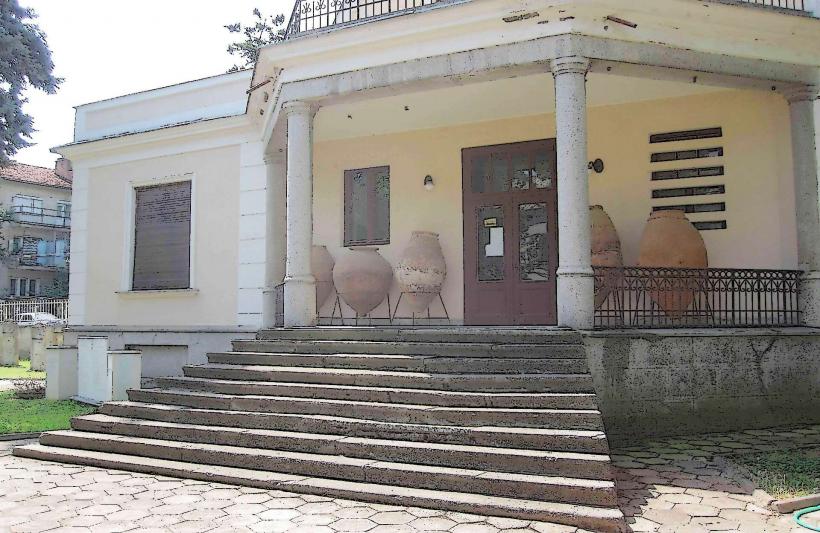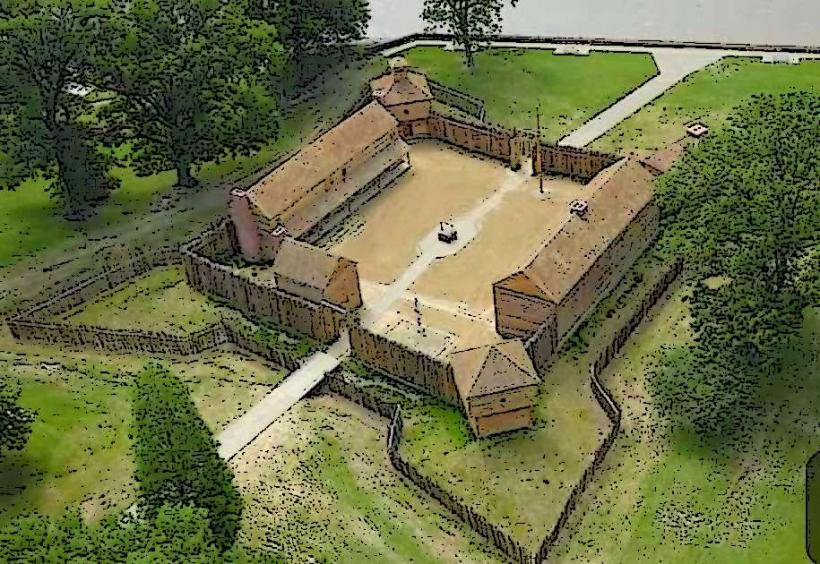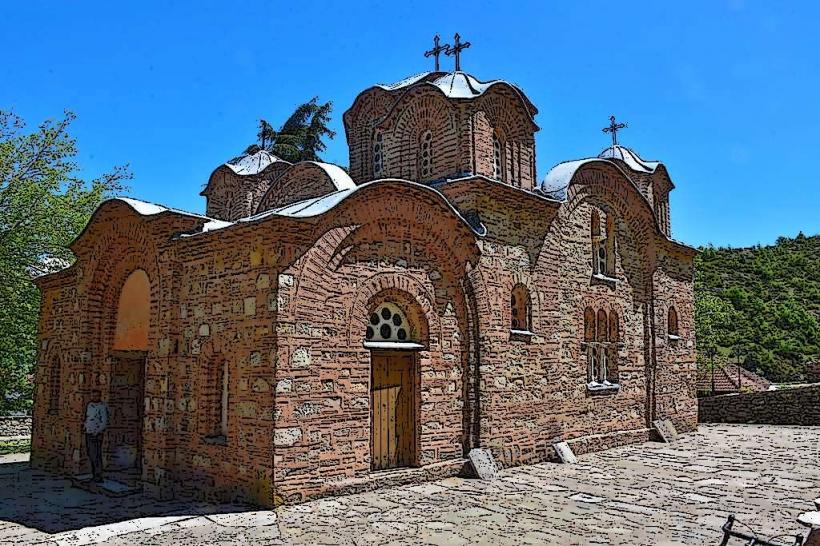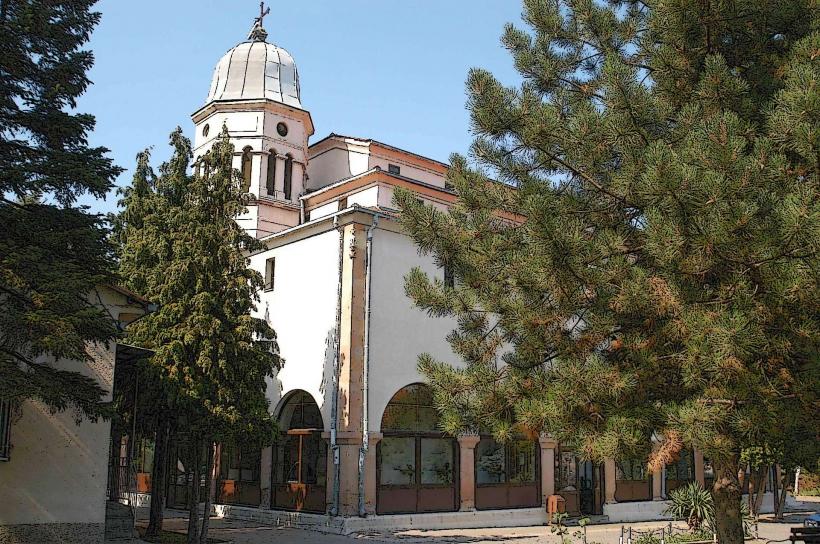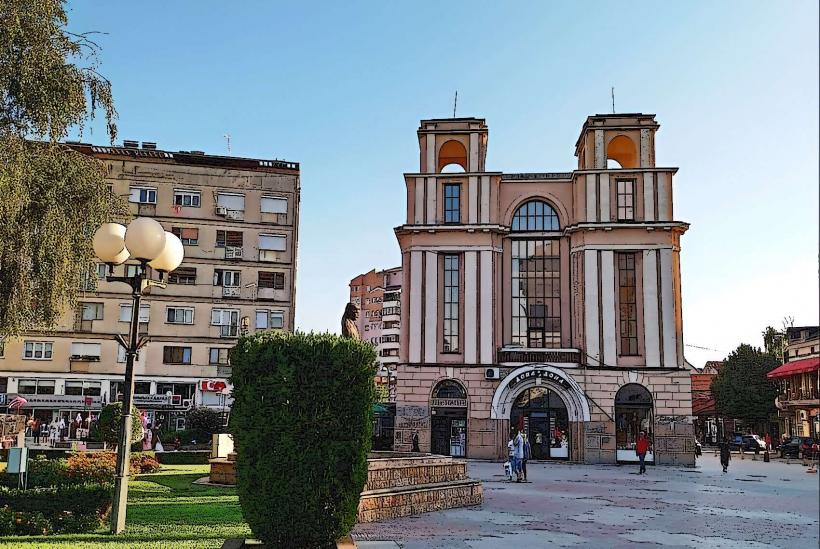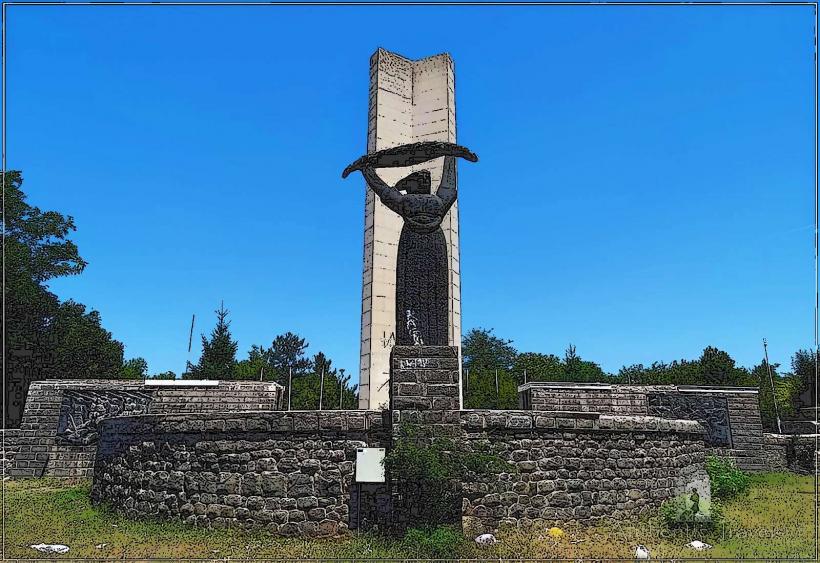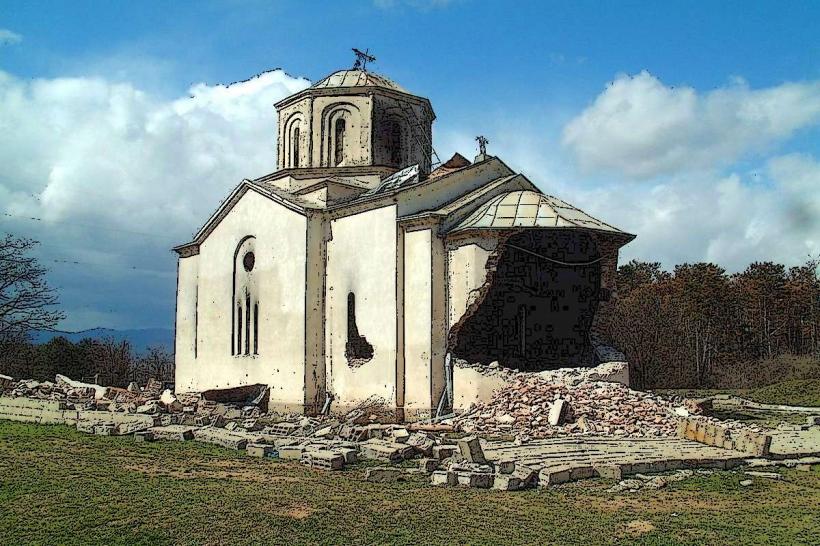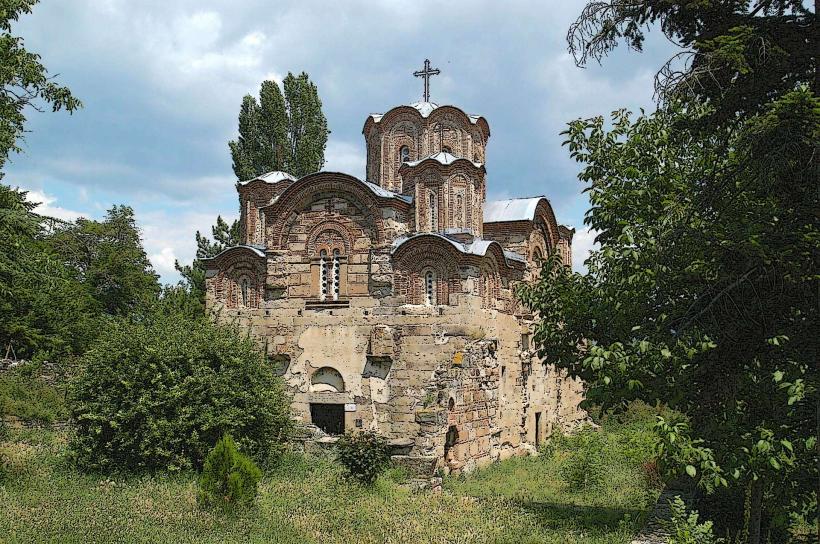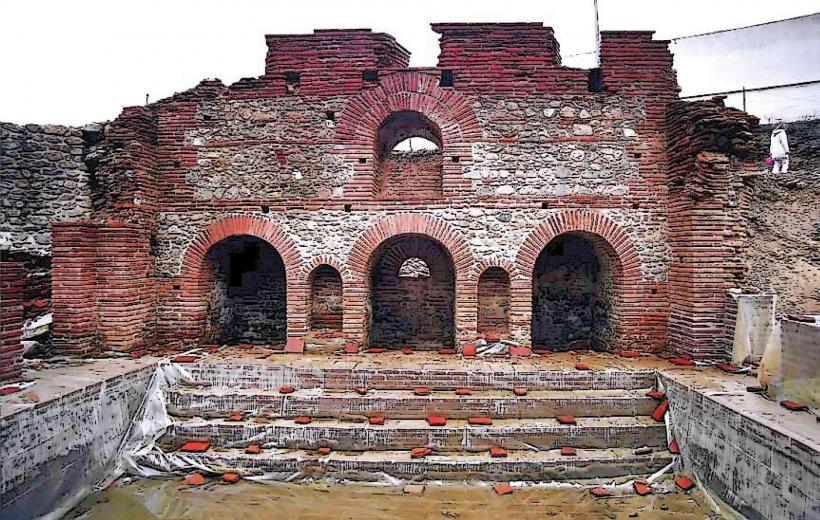Information
City: KumanovoCountry: North Macedonia
Continent: Europe
Kumanovo is a city located in the northern part of North Macedonia, near the border with Serbia. It is one of the country's largest cities and a key regional hub. Below is a detailed overview of Kumanovo, excluding specific landmarks:
Geography and Climate
Kumanovo is situated in the Pcinja Valley, bordered by the Osogovo Mountains to the south and the Kumanovo Valley to the north. The Lepenec River runs through the city, contributing to its fertile surroundings.
Climate: Kumanovo experiences a continental climate, characterized by hot summers and cold winters. In summer, temperatures can exceed 30°C (86°F), while winters can be harsh, with temperatures often dropping below freezing. Snowfall is common during the winter months, and the city has moderate rainfall in the spring and autumn.
Topography: The city is located at an elevation of around 300 meters (984 feet) above sea level. Its location in a valley surrounded by mountains gives Kumanovo a diverse landscape, with flat agricultural plains near the city and mountainous terrain in the surrounding regions.
History
Kumanovo has a long and rich history, with evidence of human habitation dating back to ancient times. The city has been influenced by various cultures and empires, including the Roman Empire, the Byzantine Empire, and the Ottoman Empire.
Ancient and Medieval Periods: Kumanovo’s strategic location near trade routes has made it an important settlement throughout history. In ancient times, the area was inhabited by Illyrian and Thracian tribes, later becoming part of the Roman Empire. The city’s significance grew during the Byzantine period, where it was an important center in the eastern Balkans.
Ottoman Era: Kumanovo was incorporated into the Ottoman Empire in the late 14th century and became a prominent town in the Ottoman administrative district. The city developed as a trade and agricultural center, and it was during the Ottoman period that Kumanovo's urban layout began to take shape.
Modern History: In the 20th century, Kumanovo became part of the Kingdom of Yugoslavia and later the Socialist Republic of Macedonia. Following North Macedonia's independence in 1991, Kumanovo saw continued development, particularly in its industrial sector. Today, the city plays an important role in the country's economy and serves as a key regional hub.
Economy
Kumanovo has a diverse economy, with significant contributions from agriculture, industry, and services. Its strategic location near Serbia and the capital city, Skopje, enhances its economic importance.
Industry: Kumanovo is one of North Macedonia’s key industrial cities, with a range of manufacturing sectors including food processing, textiles, construction materials, and chemical production. The city is home to several large factories, many of which produce consumer goods and industrial equipment. It also has a growing engineering and electronics sector.
Agriculture: Kumanovo’s fertile agricultural land is ideal for the cultivation of grains, vegetables, fruit, and tobacco. The region is known for its grain farming, and crops such as wheat and corn are grown extensively. The city also has a strong tradition of vineyard cultivation, producing wine and other agricultural products.
Trade and Services: As a major transport hub, Kumanovo has a well-developed trade sector, with a variety of markets and commercial centers. The services industry in Kumanovo has been growing, including sectors such as retail, banking, education, and tourism. The city also benefits from its proximity to Skopje and Serbia, which facilitates cross-border trade and business.
Culture
Kumanovo is known for its rich cultural heritage, which is influenced by its history and diverse population. The city celebrates a blend of Macedonian, Ottoman, and modern European cultural traditions.
Folk Music and Dance: Like much of North Macedonia, Kumanovo has a strong tradition of Macedonian folk music and dance. The city is home to many folk musicians and dancers, and traditional music festivals are an important part of local culture. The gajda (bagpipe), tambura (stringed instrument), and kaval (flute) are commonly used in Kumanovo’s folk performances.
Art and Literature: Kumanovo is a center for artistic expression, particularly in the fields of painting and sculpture. Local artists have contributed significantly to Macedonian art, and the city has a growing cultural scene, with several galleries and artistic spaces. The city also has a rich literary tradition, with many local writers and poets contributing to Macedonian literature.
Festivals and Events: Kumanovo hosts a variety of cultural and traditional festivals throughout the year, including those that celebrate Macedonian Orthodox holidays like Easter and Christmas. The Kumanovo Cultural Summer is a popular annual event that showcases local music, dance, and theatrical performances. Other events celebrate local traditions, including food festivals and folk art exhibitions.
Education
Kumanovo has a well-established educational system, with schools ranging from primary education to higher education institutions. The city plays an important role in the region's educational landscape.
Primary and Secondary Education: Kumanovo has a number of primary and secondary schools, offering general education as well as specialized programs in areas such as technology, agriculture, and the arts. Schools in Kumanovo also focus on developing students’ critical thinking and vocational skills, particularly in fields such as engineering and manufacturing.
Higher Education: While Kumanovo does not have its own university, there are several vocational and technical colleges that offer specialized education in fields such as agriculture, mechanical engineering, and business management. Many students from Kumanovo attend universities in Skopje, Bitola, or other cities in North Macedonia for further education.
Educational and Cultural Exchange: Kumanovo is also involved in various international educational and cultural exchange programs, including cooperation with neighboring countries such as Serbia and Bulgaria. These exchanges help foster a greater understanding of regional culture, history, and languages.
Religion
The majority of the population in Kumanovo is Eastern Orthodox Christian, with the Macedonian Orthodox Church being the main religious institution. There is also a significant Muslim community in the city, which contributes to its religious diversity.
Orthodox Christianity: The Eastern Orthodox Church plays a central role in the religious and cultural life of Kumanovo. The city is home to several important Orthodox Christian churches, and religious holidays like Easter and Christmas are widely celebrated. Saint George’s Day (Đurđevdan) is also an important cultural and religious celebration in the city.
Islam: Kumanovo has a sizable Muslim community, primarily consisting of ethnic Albanians and Bosniaks. The Muslim community in Kumanovo celebrates Islamic holidays such as Eid al-Fitr and Eid al-Adha, and the city has several mosques that serve the local population.
Religious Tolerance: Kumanovo is known for its religious tolerance, where different religious communities coexist peacefully. People of different faiths participate in each other’s festivals and religious celebrations, contributing to a harmonious multicultural environment.
Tourism and Recreation
While Kumanovo is primarily an industrial and agricultural city, it has potential for tourism due to its natural beauty, cultural heritage, and historical significance.
Natural Attractions: The surrounding Osogovo Mountains and Pcinja River offer opportunities for outdoor activities such as hiking, birdwatching, and fishing. The nearby Lepenec River also adds to the city’s natural charm, with several riverside parks and recreational areas.
Cultural and Historical Tourism: Kumanovo has several historical sites that reflect its rich past. While the city’s industrial character may not be as historically oriented as other Macedonian cities, its Ottoman-era buildings, churches, and traditional markets attract visitors interested in the region’s cultural heritage.
Recreational Facilities: Kumanovo has a range of recreational facilities, including sports complexes, parks, and cultural centers. The city also offers venues for theater, dance, and music, contributing to a well-rounded cultural experience for both locals and tourists.
Challenges and Future Outlook
Kumanovo faces several challenges as it continues to grow and modernize, including issues related to economic diversification, infrastructure development, and environmental sustainability.
Economic Diversification: While Kumanovo has a strong industrial base, there is a need for further economic diversification to reduce dependence on heavy industries. Developing sectors like information technology, tourism, and clean energy could help secure the city’s economic future.
Urbanization and Infrastructure: Kumanovo is undergoing significant urbanization, and there is a need for improvements in infrastructure, including public transport, healthcare, and education. Investments in sustainable urban development will be crucial to ensuring the city’s long-term growth.
Environmental Sustainability: Like many industrial cities, Kumanovo faces environmental challenges related to pollution and waste management. There is a need for green initiatives, including recycling, energy efficiency, and environmentally-friendly technologies, to protect the city’s natural environment.
Conclusion
Kumanovo is a city with a rich history, diverse economy, and vibrant cultural life. It has potential for growth and development, particularly in the areas of industry, agriculture, and tourism. By addressing challenges related to infrastructure, environmental sustainability, and economic diversification, Kumanovo can continue to grow into an important regional center in North Macedonia.

